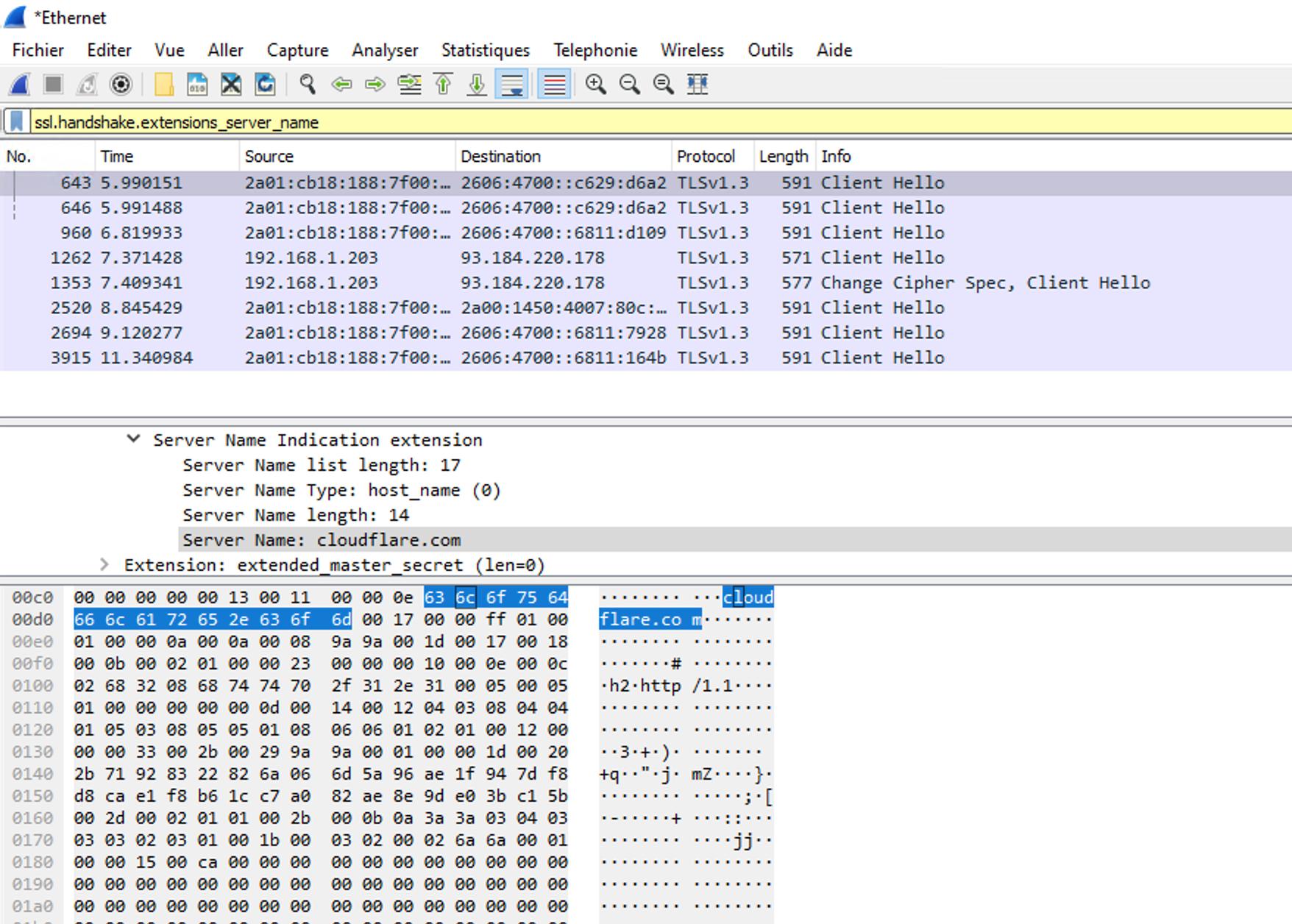Since nobody provided a wire capture, here's one.
Server Name (the domain part of the URL) is presented in the ClientHello packet, in plain text.
The following shows a browser request to:
https://i.stack.imgur.com/path/?some=parameters&go=here
![ClientHello SNI]() See this answer for more on TLS version fields (there are 3 of them - not versions, fields that each contain a version number!)
See this answer for more on TLS version fields (there are 3 of them - not versions, fields that each contain a version number!)
From https://www.ietf.org/rfc/rfc3546.txt:
3.1. Server Name Indication
[TLS] does not provide a mechanism for a client to tell a server
the name of the server it is contacting. It may be desirable for
clients to provide this information to facilitate secure
connections to servers that host multiple 'virtual' servers at a
single underlying network address.
In order to provide the server name, clients MAY include an
extension of type "server_name" in the (extended) client hello.
In short:
FQDN (the domain part of the URL) MAY be transmitted in clear inside the ClientHello packet if SNI extension is used
The rest of the URL (/path/?some=parameters&go=here) has no business being inside ClientHello since the request URL is a HTTP thing (OSI Layer 7), therefore it will never show up in a TLS handshake (Layer 4 or 5). That will come later on in a GET /path/?some=parameters&go=here HTTP/1.1 HTTP request, AFTER the secure TLS channel is established.
EXECUTIVE SUMMARY
Domain name MAY be transmitted in clear (if SNI extension is used in the TLS handshake) but URL (path and parameters) is always encrypted.
MARCH 2019 UPDATE
Thank you carlin.scott for bringing this one up.
The payload in the SNI extension can now be encrypted via this draft RFC proposal. This capability only exists in TLS 1.3 (as an option and it's up to both ends to implement it) and there is no backwards compatibility with TLS 1.2 and below.
CloudFlare is doing it and you can read more about the internals here —
If the chicken must come before the egg, where do you put the chicken?
In practice this means that instead of transmitting the FQDN in plain text (like the Wireshark capture shows), it is now encrypted.
NOTE: This addresses the privacy aspect more than the security one since a reverse DNS lookup MAY reveal the intended destination host anyway.
SEPTEMBER 2020 UPDATE
There's now a draft RFC for encrypting the entire Client Hello message, not just the SNI part:
https://datatracker.ietf.org/doc/draft-ietf-tls-esni/?include_text=1
At the time of writing this browser support is VERY limited.



https://somewhere_i_trust/ways_to_protest_against_the_government/. Then the URL contains confidential data, namely the suggestion that I am considering protesting against my government. – Loganloganberry